soccer blogs
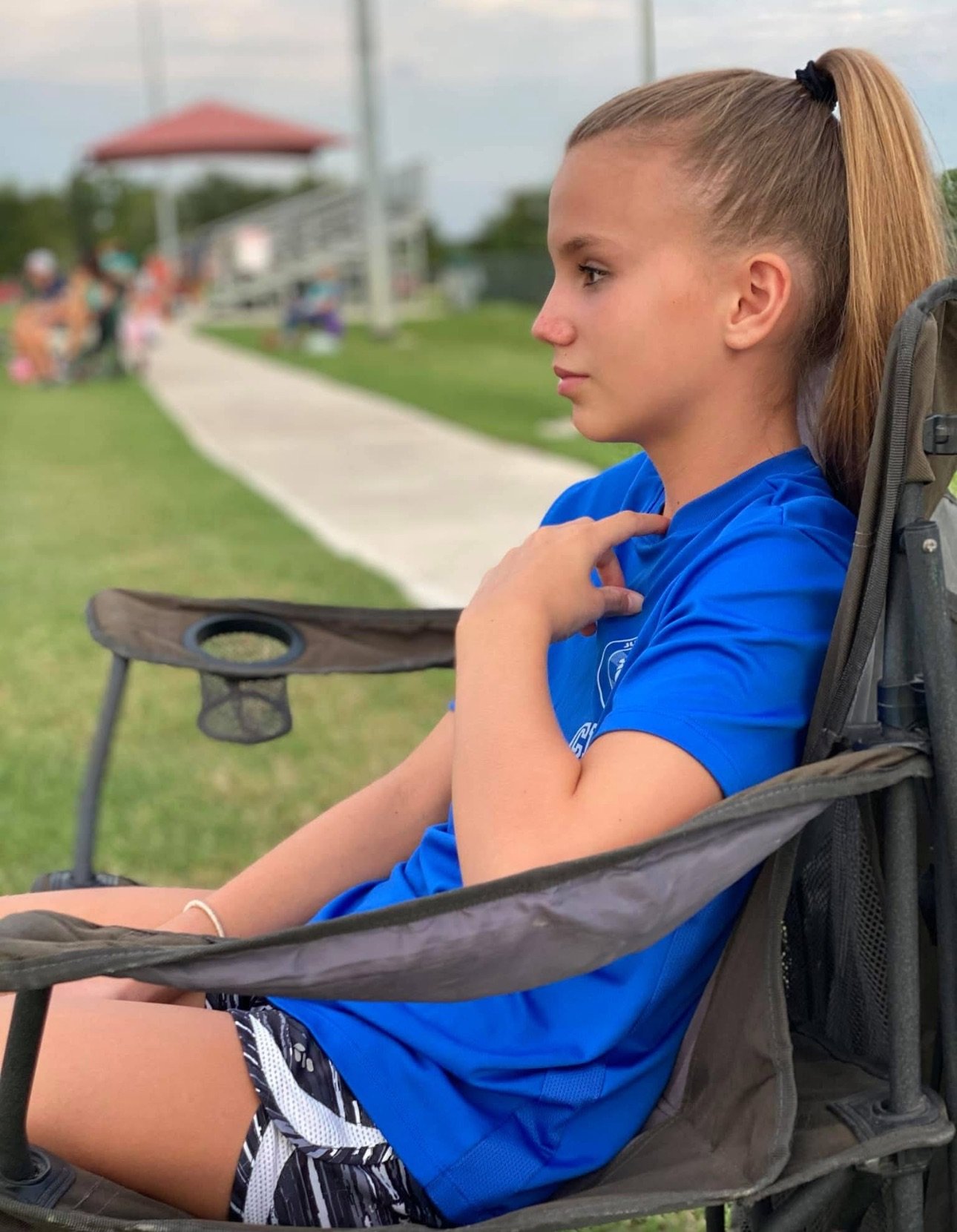
New Cleats, New Chaos
Let me start by saying this: I didn’t know the difference between a striker and a center back.
When my 11-year-old daughter told me she wanted to join a competitive soccer team, I pictured weekend games, some snacks on the sidelines, and maybe a fun jersey or two. What I didn’t picture? A full-on crash course in youth sports politics, an overflowing back seat of gear I can’t name, and the emotional rollercoaster of watching your kid jump into something… late.
She’d never played soccer before. Not even in the casual ‘rec’ league most kids start at 5. But suddenly, she wanted in. Big dreams. Big cleats. No clue where to start—her or me, well mostly me.
The First Practice
We showed up early, like good newbies. She wore her brand-new cleats and I brought a lawn chair I’d proudly added to my “soccer gear” list. Ten minutes in, she appeared a little lost in the drills and got confused by the offside rule. I sat there Googling “What is offsides in soccer?” and came up with more diagrams than I knew what to do with.
But here’s what I learned that first week: showing up is enough. She didn’t care that the other girls had been playing for years. She chased the ball like it owed her money and smiled the whole way home. This was just the beginning of an unconditional love with so many layers.
The Tryouts: Yes, There Are Tryouts
This was my first reality check. Competitive soccer means teams aren’t just “sign up and play.” They’re chosen. Evaluated. Assessed.
I watched nervously from the stands, because standing on the sidelines made me feel like an imposter mom who had missed the first five seasons of this show. She came back sweaty and on the biggest adrenaline high: “I think I made it.”
She did. Onto a developmental team—not the “A team,” whatever that is—but a spot she earned on her own merit. No politics. No history. Just heart. The coach told me as we left, “Ya have to start somewhere.” To this day, I appreciate his honesty and his willingness to take a chance on a kid with absolutely no experience, just a desire (and a little natural footwork).
The Group Chat Nightmare
Here’s something they don’t warn you about: the team group chat. It’s like an underground network where game schedules and uniform codes are dropped in rapid-fire. I missed the memo about black socks vs. white socks (apparently a serious offense), and my daughter once had to borrow shorts because I didn’t know she should always pack every single uniform combo for when the out of team comes in the wrong uniform and we have to change.
Also, why does everyone seem to already know each other? I was the only mom introducing myself like it was a PTA meeting. Oh, yeah…they’ve been in the circuit a little longer than me.
The Emotional Curveball
What hit me the hardest? The tears. Not from me (though close), but from her. She cried in the car after a tough practice, or a tough loss. Learning to accept the quiet moments as she processed not only the struggles but sorting through the emotions of wanting more is difficult but necessary. She’s her biggest critic. I’m there when she’s ready.
And this is where I learned one of my biggest lessons as a mom: you can’t coach grit, but you can cheer for it. I couldn’t fix the game, but I could praise her hustle. She kept showing up. And slowly, the gap started closing. I was and still am so proud of her perseverance to be more and do more. This is her journey and I am just along for the beautiful ride.
The Joy in the Chaos
Fast forward a few months and my daughter now lives in cleats. She runs drills in the backyard and the side of the house is her rebound board. She knows the names of Premier League players I can’t pronounce, and yes—she now knows what a striker does. She even knows the positions by their number. She plays the 5 spot and can easily slide into the 6 when needed. Haha, I think I said that right. She knows, I’m still learning.
Me? I still can’t keep track of which field we’re on without the field maps. I pack snacks like we’re moving cross-country and although I don’t cheer loud (God gifted me a calm, soft spoken demeanor), I’m screaming on the inside. If you watch my feet during a game, I’m often “kicking” the ball from my lawn chair as if I were playing.
I wouldn’t trade this chaos for anything. Starting late wasn’t a disadvantage. It was a spark. Watching her fall in love with the game on her own terms has been one of the greatest joys of my motherhood journey.
If You’re That Mom Too…
If your kid is starting something “late”… do it anyway. Let them be the beginner. Let them be bad at it. Let them fall, cry, grow, and rise.
And if you’re the mom on the sidelines Googling soccer terms while holding a Starbucks and wearing the wrong team color, just know—I’m right there with you.
We’re learning. And we’re doing just fine.
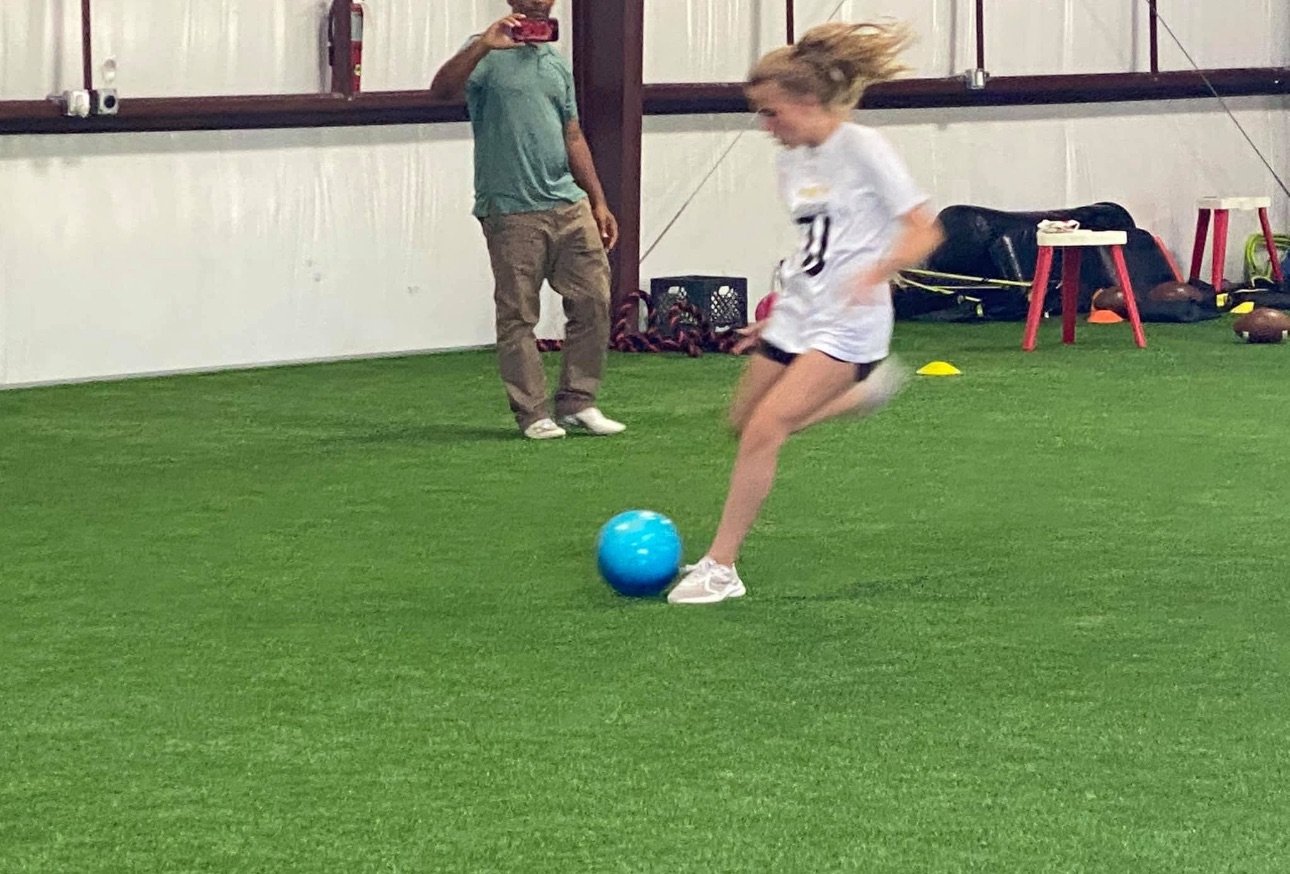
Cleats, Chaos and a Clueless Mom
I don’t know what a center back does. I’m not sure how many players are on the field. And I still can’t figure out what “offside” means — no matter how many YouTube videos I watch.
But what I do know? My daughter fell in love with this beautiful game. Late, by competitive standards. But right on time for her.
From Tumbling to Shin Guards
Before soccer, our world was trying different sports each season. From Cheer to T-ball to Tumbling, she would end each season with a firm, “I can teach myself this at home.” Soccer wasn’t even on our radar. But one day, she said was invited to a little recreational league and it’s as if we both looked at each other and just knew…this was it. The coach called me over a few practices in and said “Have y’all considered competitive soccer?”
Competitive soccer.
No casual weekend league. No learning the basics in a cute little recreational program.
It was obvious she wanted the real deal. The drills. The tryouts. The gear. The sweat. And even though I didn’t know a single thing about the sport… I said yes.
The Clueless (But Committed) Soccer Mom
I was the mom showing up to tryouts asking, “Wait, is this the right field?”
I bought cleats that gave her blisters. My OCD became a thing as we read through the group team chats about uniform combos. And don’t get me started on how long it took me to realize “away game” didn’t always mean “far away.”
I’ve asked strangers on the sidelines what the “offside trap” means. I even downloaded training videos and soccer was always on TV so I could learn.
Am I clueless? Yes. Am I committed? 100%.
Learning Together
My daughter didn’t join a team to become the best. She joined because she felt something spark inside her.
She wanted to try. To run hard. To play with heart — even when she was behind.
And being behind hasn’t stopped her. She watches soccer tutorials like they’re Netflix. She asks questions at practice. She messes up, then does it better the next time.
She’s learning the game. And I’m learning how to support her, every single step of the way.
The Late Start Doesn’t Matter
People assume if your kid didn’t start soccer at age 5, they’ve missed the boat. That it’s too late to catch up. That the competitive world of youth sports has no room for late bloomers.
But I’ve watched my daughter walk onto fields with girls who’ve played for years—and hold her own. Not because she’s the best. But because she’s brave.
She’s living proof that passion can make up for a late start. And that a mom with no clue can still show up like a pro.
Here’s to the Other Moms Like Me
To the mom Googling “soccer rules for beginners” in the parking lot: I see you.
To the mom who’s scared her daughter won’t fit in because she’s starting “late”: don’t let that stop her. To the mom who cheers too loud because she doesn’t know when she’s supposed to cheer: keep doing it.
You don’t need to know the sport to support the player. All you need is love, snacks, and a willingness to grow — just like your kid is.
Final Whistle
We might never fully understand the offside rule. But we do understand what it means to show up. To support our daughters with everything we’ve got — even when we feel totally out of our league.
Soccer may not have been in our plan.
But now?
It’s a big part of our story. And I wouldn’t trade it for anything
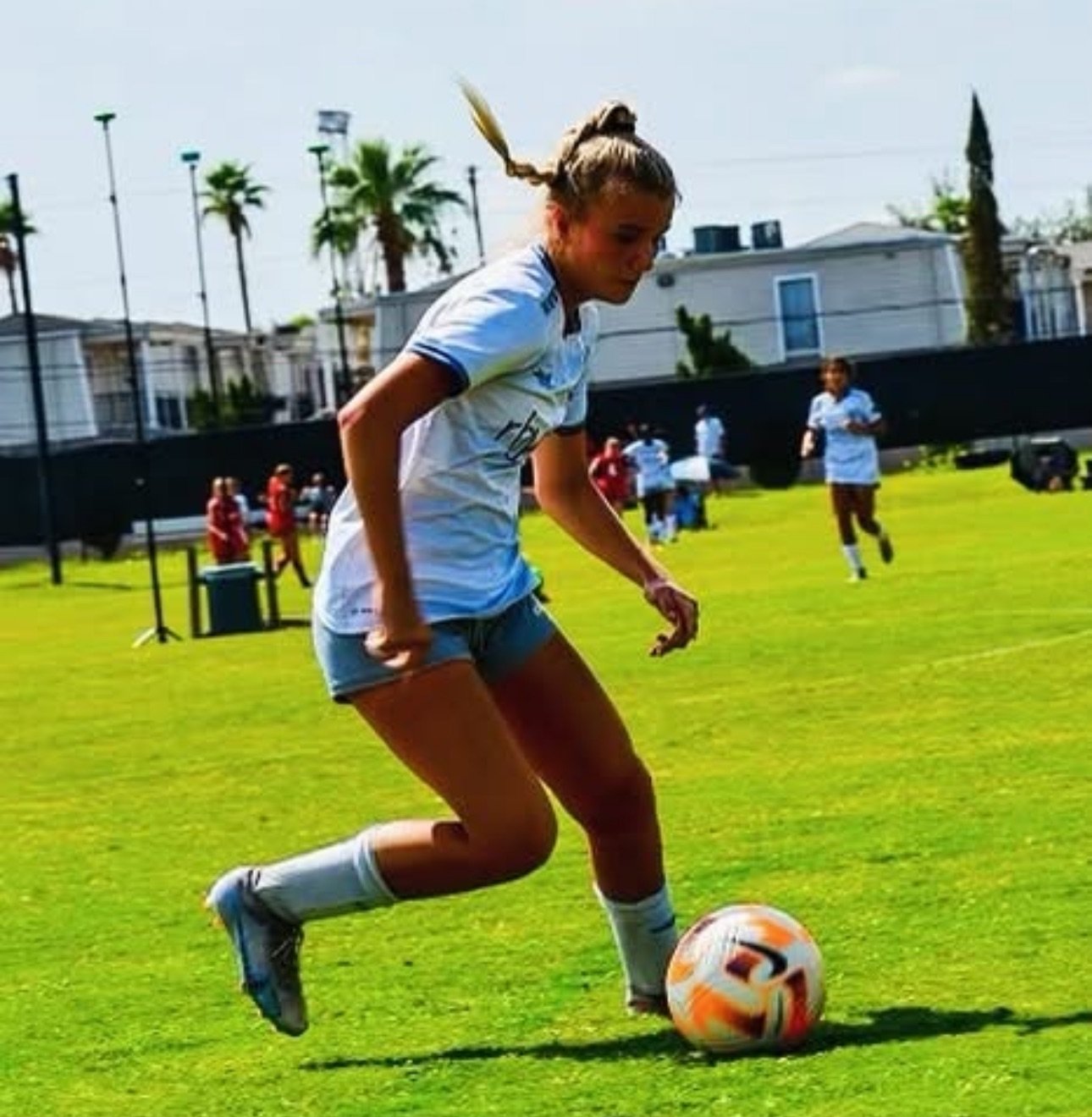
From Clueless to Clipboard:
When my daughter joined a competitive soccer team at 11, I was the mom who barely knew what size cleats to buy — let alone what “formation” meant or how many players were supposed to be on the field.
I was still trying to decode the group chat and figure out if “home kit” meant the white jersey or the blue one.
And then somehow… I became team manager.
Yes, me. The woman who still Googles “offside rule explained like I’m five.”
Why I Said Yes (Even Though I Had No Clue)
I didn’t say yes because I was confident. I said yes because I wanted to be involved. I wanted to learn. And, let’s be real — it was clear the team needed someone to take charge of all the little things that make a season run smoothly.
Schedules. The Team Chat. Tournament paperwork. It was a lot — but it was also something I could do, even if I didn’t know the difference between a striker and a center back.
My Team Manager Crash Course
Let me tell you, stepping into the role is like being dropped into a new country where everyone speaks Soccer and you only know a few phrases.
Suddenly I was:
Coordinating jerseys for three games in one weekend
Answering parent questions I had to secretly Google first
Updating weather delays and field locations like I worked for the city
Getting players “registered” with birth certificates and official player cards
I downloaded apps I didn’t know existed. I made spreadsheets. I learned how to pronounce coaches’ names. And I printed rosters like I was running a small business – extras…well OCD.
What I’ve Learned (So Far)



And best of all? It brought me closer to my daughter. Not just as her biggest cheerleader — but as a part of the experience.
The Unexpected Wins



I didn’t expect to love this. But I really, really do.
To the Mom Considering It…
You don’t have to be a soccer expert. You just have to show up, stay organized, and be willing to learn. The rest? It comes with time.
And in the process, you’ll get something way more valuable than knowledge of positions or formations — you’ll become part of a community. You’ll be in the moment with your kid, not just watching from the sidelines.
So, if you’re thinking of stepping into the team manager role… do it. Even if you’re still figuring out the difference between a goal kick and a corner.
You’ll learn. And you’ll love it.
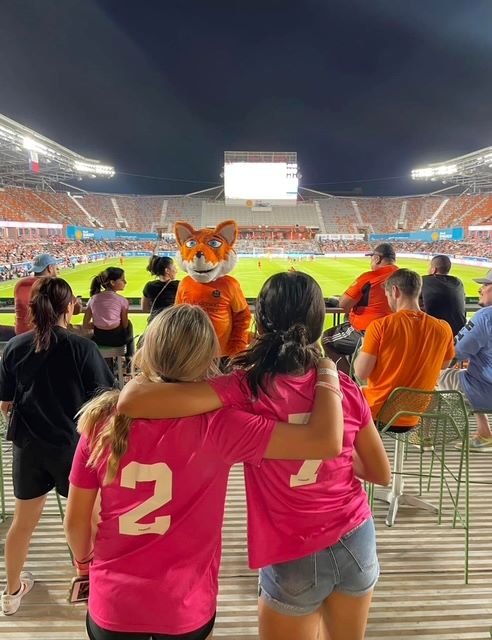
The Emotional Side of Soccer
There’s something magical about a soccer team. It’s not just the goals scored, the tournaments won, or the long drives to weekend games. It’s the laughter during warmups, the inside jokes on the sidelines, the TikToks at the end of practice and the way the kids light up when they see each other again—sometimes more like siblings than teammates.
But what happens when one of them leaves?
Whether it’s your child or one of their closest teammates, the emotional impact of a departure is real—and often deeper than expected. Competitive sports bring kids together in a way that few other things do. They train hard, face disappointment, and celebrate victory—together. So, when a teammate moves, switches clubs, or simply steps away from the game, it’s not just a name missing from the roster. It feels like losing a piece of the team’s heart.
The Bond Built on the Field
In soccer, relationships are forged through shared effort. Early mornings, late nights, sweat, setbacks, and comebacks create a unique bond. Kids grow together, season by season, learning to trust each other on and off the field. The team becomes a safe space—especially in those middle school and early high school years where friendships can be hard to navigate.
As a parent, watching that bond grow is beautiful. You cheer for every teammate like they’re your own. You carpool. You share snacks. You win and lose—together.
The Quiet Grief of Change
When one of those core players leaves, the team dynamic shifts. Practices feel different. The energy changes. Sometimes, your child might not say much—but you can tell something’s missing. Once, my daughter burst into tears on the practice pitch. She kept playing, but I could see it. The loss was deeper than she expected and it caught up to her. For a kid that doesn’t show that side of her emotions often, it will forever be a core moment for her.
It can feel like a breakup. For them and for you. For us, the key was to stay in touch. We planned holiday get-togethers, birthday celebrations and of course social media helps bridge the gap between spending time together.
Helping Your Child Process It
This part isn’t in the handbook. No one tells you how to help your child when they feel like their soccer family is splintering. But it’s an opportunity—a hard one, but a powerful one—for growth.
Acknowledge the loss. Let them feel sad. Normalize that it’s okay to grieve something that meant so much.
Keep the friendship alive. Encourage FaceTimes, text check-ins, and visits when possible. Remind them that distance doesn’t erase a real bond.
Focus on what remains. Celebrate the new teammates joining, and the memories that will always stay.
Model resilience. You’re probably feeling the loss, too. Be honest—but also show them how to move forward with heart and hope.
A Love That Lasts Beyond the Game
Here’s the beautiful part: these kinds of friendships don’t fade easily. Years from now, they’ll remember who they played with, not just what tournaments they won. They’ll talk about the teammate who always had their back, the one who made them laugh on hard days, the one they still keep in touch with even though they’re wearing different jerseys now.
Because the heart of soccer isn’t just in the cleats or the goals—it’s in the people.
So, if you’re in a season of goodbyes, give yourself and your child grace. Embrace the memories, cry a little if you need to, and know this: every goodbye makes space for a new chapter—but the love built on the field? That never really leaves and we’re thankful for that.
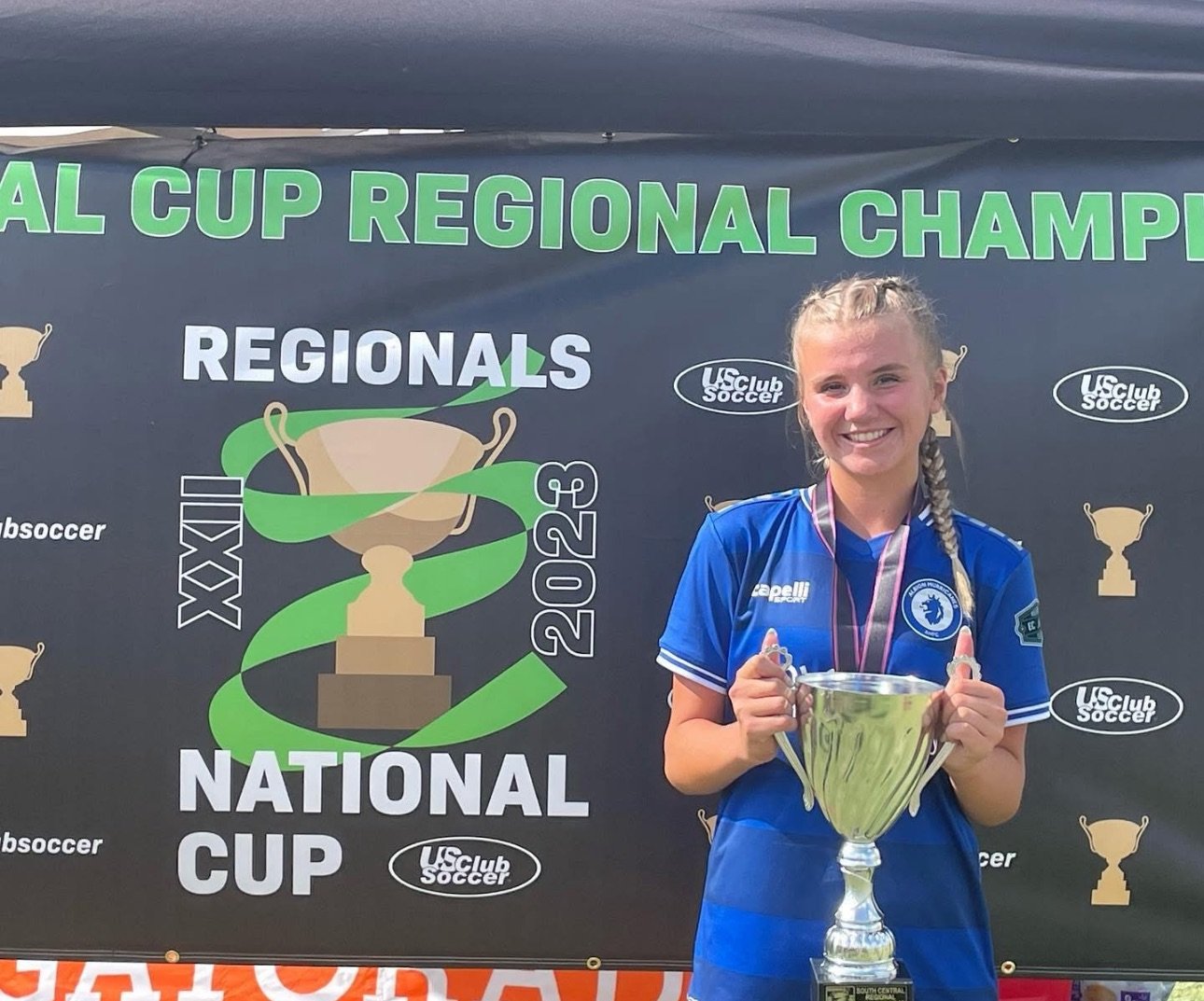
Beyond the Game
There’s something truly special about being part of a competitive traveling girls soccer team. From early morning road trips and post-game team dinners to shared hotel rooms and matching backpacks—this journey is so much more than just soccer. It’s a lifestyle. A sisterhood. And a season of memories that will be cherished forever.
More Than a Team—A Second Family
When your daughter joins a competitive traveling team, you quickly realize this isn’t just about wins and stats. This is about belonging, about her finding her home. This family will always be with her, even through life’s changes.
These girls train together multiple times a week. They navigate tough losses, nail-biting wins, and sometimes long stretches away from home. Somewhere in between conditioning drills and pre-game huddles, they become sisters. You’ll hear them giggling in hotel hallways, hyping each other up before kick-off, and comforting one another after a tough game.
You’ll witness friendships that grow stronger with every mile traveled and every challenge overcome.
Team Dinners & Inside Jokes
Ah, the team dinners. They’re never just about food.
It might be a pizza place after a long day of games, or a spontaneous potluck at a hotel breakfast room. These dinners are full of laughter, TikTok dances, shared playlists, and endless inside jokes. Parents sit at one table swapping stories, while the girls take over another—talking about school, soccer, and everything in between.
These moments off the field are where the real bonding happens. They learn to rely on each other, to support each other, and to have fun, no matter the scoreboard.
The Gear Galore (And Yes, You’ll Need a Bigger Trunk)
Joining a travel team means you’ll quickly become an expert in soccer gear—and how to pack it all.
Here’s a glimpse at what a typical tournament weekend might require:
Uniforms – Home, away, and sometimes alternate kits. Washed and ready. Don’t forget the socks, multiple pairs of socks!
Cleats – Usually two pairs, just in case.
Slides/sandals – Essential for post-game recovery and those hotel lobby walks.
Shin guards (oh, the various sizes)
Water jugs, electrolyte drinks & snacks – Because teenage athletes are always hungry.
Backpack or gear bag – Bonus points if it has their name and number on it.
Portable chairs & shade tents (for parents!)
Extra socks, extra everything, and yes… duct tape (trust me). My daughter has a favorite pair of cleats and although she had a “reserve” pair, she duct taped those cleats and wore them for months. (Btw: cleats were pink and so was the tape)
It’s a well-oiled machine once you get the hang of it—but those first few weekends might feel like you’re packing for a week-long expedition.
Memories That Outlast the Season
The medals and trophies are nice, but what your daughter will really carry with her are the memories.
That one impossible comeback in the pouring rain (maybe even the pouring, freezing rain).
The road trip where everyone sang at the top of their lungs or the adventure to the peaks of the Rocky Mountain National Park after a Nationals game in Denver.
The first time the coach put her in as a starter—and the smile that didn’t leave her face for hours – nothing else mattered that day.
Sleepovers before early matches, new best friends, and parents who become extended family.
You’ll watch her confidence grow, her skills sharpen, and her heart expand in ways you didn’t expect. Competitive soccer isn’t always easy—it requires sacrifice, commitment, and resilience. But the life lessons it teaches are powerful.
To the Soccer Families Living This Life…
You’re in the thick of it now—the packing, the planning, the sideline cheering, the emotional rollercoaster of wins and losses. But you’re also in the middle of something incredible.
Because someday, long after the final whistle blows and the jerseys are packed away, your daughter will look back at these years and say:
“That was one of the best times of my life.”
And you’ll smile, knowing you got to be right there beside her—for all of it.
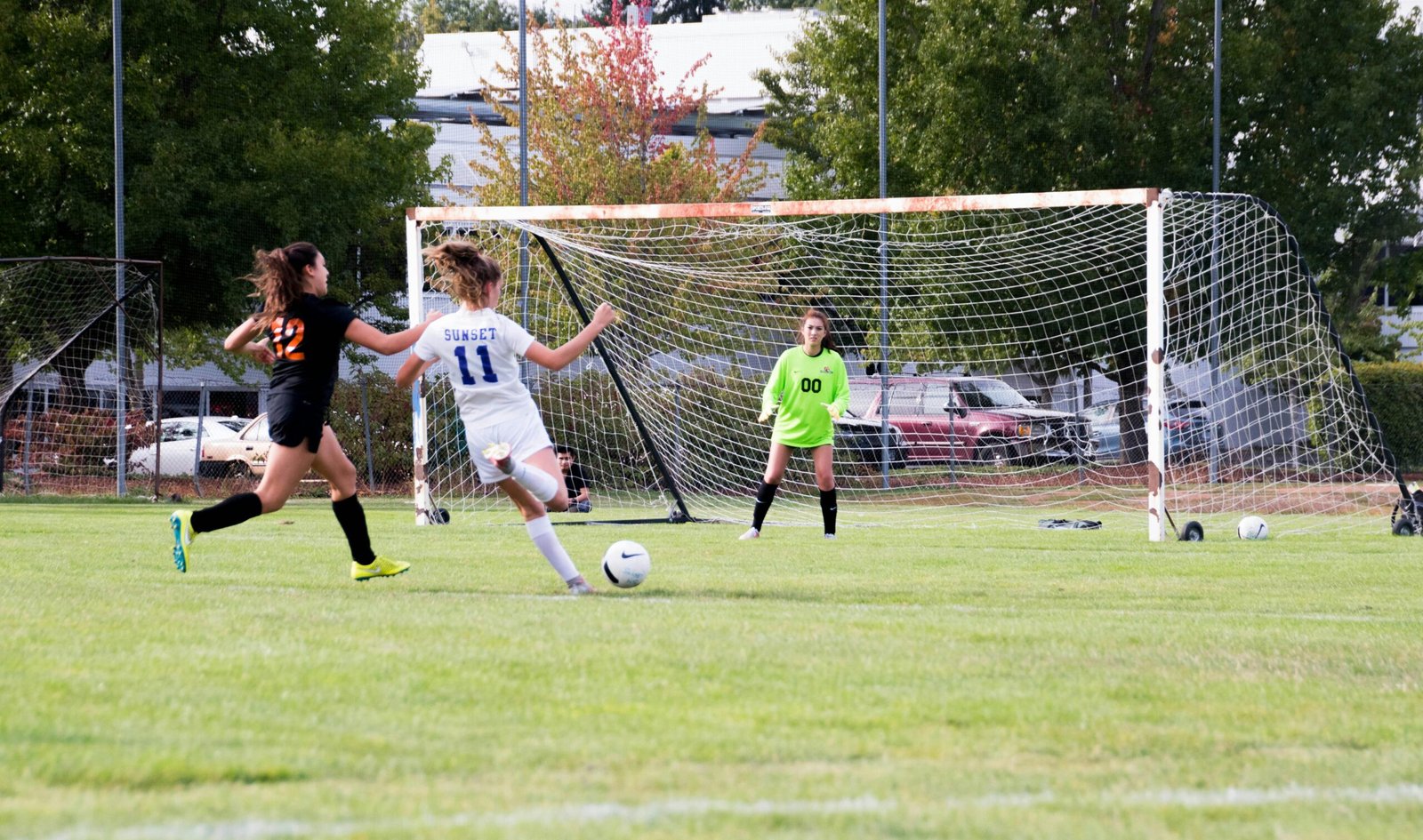
Navigating the Soccer Recruiting Journey
For families with competitive soccer players dreaming of playing at the college level, the recruiting process can feel overwhelming. Between game film, ID camps, college showcases, and emails to coaches—it’s easy to feel like you’re always chasing the next step.
One date that stands out in this journey? June 15th. It’s a milestone moment in the recruiting calendar—and one that can open new doors for both athletes and families.
Let’s break it down.
 What’s So Important About June 15th?
What’s So Important About June 15th?
According to NCAA recruiting rules, June 15th after sophomore year is the first day Division I and Division II college coaches can directly contact players.
That means:
Coaches can send emails and text messages.
Phone calls and direct messages become legal.
They can start having real conversations about recruiting, including unofficial visits and program interest.
For many athletes, this is the day their phone might finally buzz with the message they’ve been waiting for.
But let’s be honest—not every player will hear from a coach on June 15th. And that’s OK. This process isn’t a one-day event; it’s a journey that unfolds differently for every athlete. Please remember that. I did not place any focus on this date for my child. I need her to figure out her place in this world without the stress of a date.
 The Power of a Strong Highlight Reel
The Power of a Strong Highlight Reel
Before June 15th, players and families can still take meaningful steps—and one of the most important is building a standout highlight video.
College coaches are busy. They watch hundreds of clips. Your job is to make your player shine in the first 30–60 seconds.
A good highlight reel should include:
High-quality video (clear footage, not filmed from the parking lot).
Jersey number clearly visible.
Player always easy to spot (use arrows or circles at the start of each clip).
A mix of moments: technical skills, game IQ, hustle plays, and position-specific strengths.
Bonus tip: Upload the reel to YouTube or a recruiting platform like Hudl or Veo. My daughters league uses SportsRecruit and it is amazing. Some also advice to simply email directly and skip the recruiting platforms. Keep the title clean and searchable:
“2026 Midfielder – [Player Name] – Summer 2025 Highlights”
 Coach Conversations: What to Expect & How to Prepare
Coach Conversations: What to Expect & How to Prepare
Once June 15th hits and the communication door opens, here’s what players—and parents—should know:
1. It might start small.
An email saying “we’ve seen your film and want to learn more.” This is the start of the relationship, not the finish line.
2. Coaches want to talk to the athlete, not the parent.
Yes, it’s nerve-wracking. But this is where players begin to learn life skills: communicating professionally, being prepared, and showing confidence.
3. Questions to prep for:
What are your academic interests?
What are you looking for in a college?
What do you love about soccer?
What are your strengths on the field?
4. Questions your child can ask coaches:
What does your program look for in players?
What does a typical day look like for your athletes?
How many players are you recruiting in my class/position?
 Remember: Every Player’s Path is Different
Remember: Every Player’s Path is Different
Some kids will have five schools texting them on June 15th. Others won’t hear anything until junior year. Some will find their fit at a DIII school where they thrive. Others may choose NAIA, JUCO, or a walk-on opportunity.
The most important thing? Focus on fit over flash.
Ask: Does this school feel right academically, athletically, and emotionally?
 Final Thoughts for Parents
Final Thoughts for Parents
Be the guide, not the driver. Let your athlete lead.
Celebrate small wins. A coach reply, a great highlight clip, a productive phone call—it all counts.
Stay organized. Track schools, contacts, and outreach. It makes the journey feel more manageable.
And above all—remember this:
No matter where your child lands, the discipline, resilience, and leadership they build through this process will serve them long after the final whistle.
